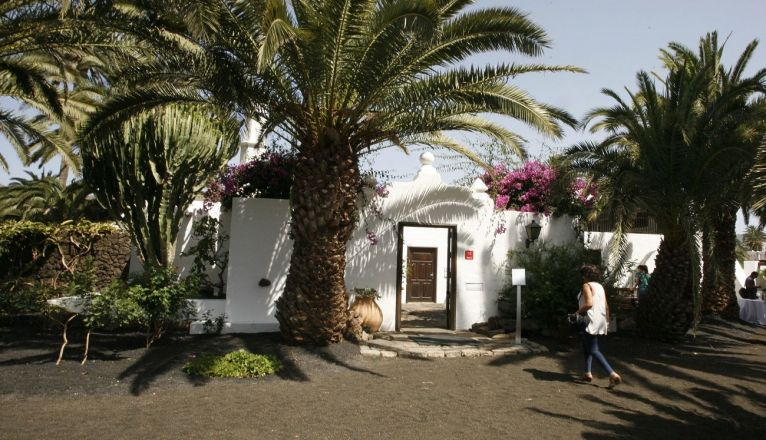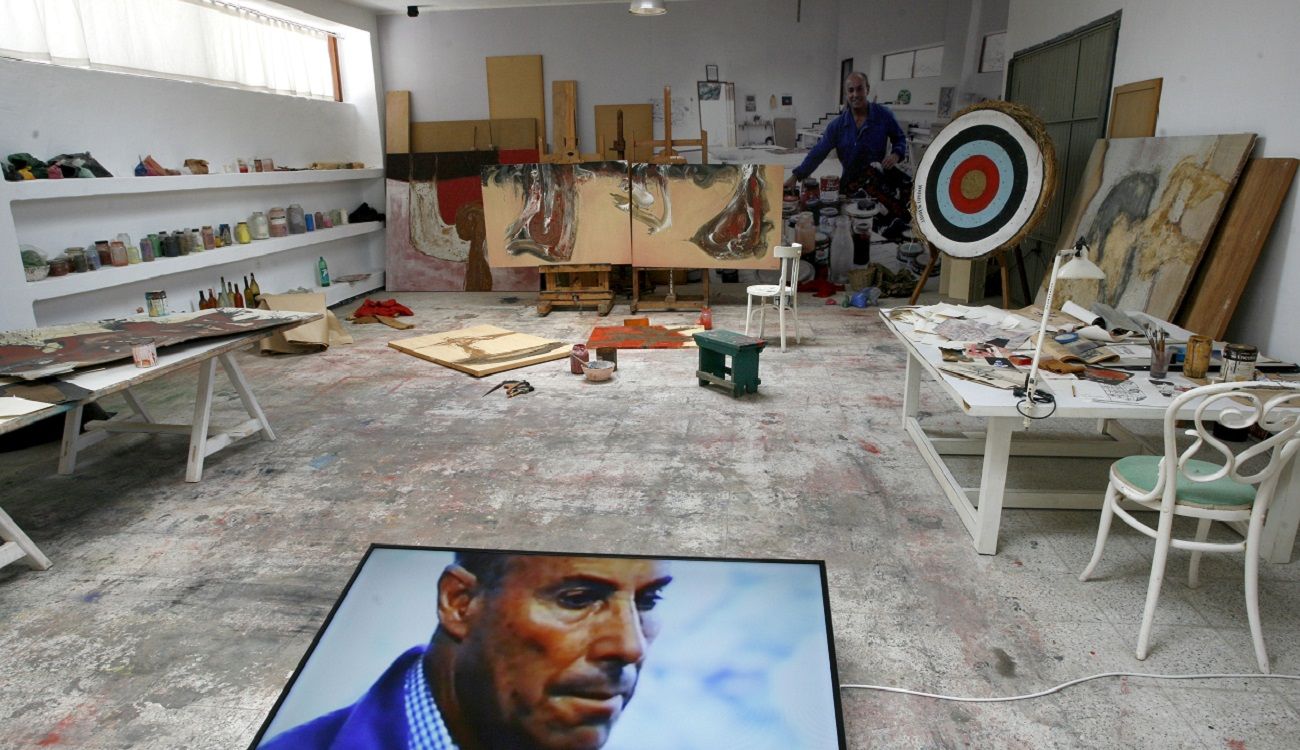The culture and architecture of Lanzarote cannot be understood without César Manrique's work, an artist who knew how to develop the potential of the island, always defending the environment and its essence.
Born in Arrecife in 1919, Manrique became a total artist over the years, mastering different creative languages, such as painting, sculpture or urban planning, knowledge that he captured in the different municipalities of the island, but also in other regions of Spain.
Here you can find seven places that reflect César Manrique’art in Lanzarote.
1. Jameos del Agua
César Manrique was able to see the potential for an unprecedented work of art in the middle of a collapsed roof of a volcanic tube, thus creating his first Center for Art, Culture and Tourism called Los Jameos del Agua.
It is a lake inside a volcanic tube created by the lava from the Corona Volcano, where a unique endemic species called the blind crab lives today. Tiny white crabs that you won't be able to see anywhere else in the world.
The place also has a volcanic museum, a restaurant, an outdoor swimming pool (in which swimming is currently not allowed) and an auditorium where famous singers usually come to give concerts. A space where the turquoise blue of the water, the white of the soil, the black of the volcanic rocks and the green of the large ferns mix in perfect harmony.
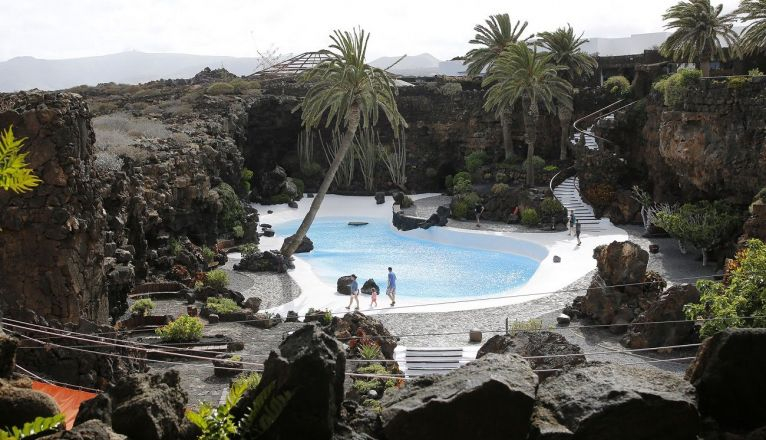
2. Casa-Museo del Campesino
The Casa-Museo del Campesino, in San Bartolomé, is one of those places that catches your attention from the road, due to its unique architecture, very characteristic of César Manrique.
It is a building that aims to honour the efforts of the peasants of Lanzarote, who had to face adverse conditions for their territory to prosper.
There you will find a restaurant where you can taste traditional Canarian dishes such as millo broth, grouper sancocho or goat meat stew. In addition, the complex is characterized by an avant-garde work of more than 15 meters known as the Monument to Fertility. Manrique managed to create this work of art, which has already become a symbol of Lanzarote.
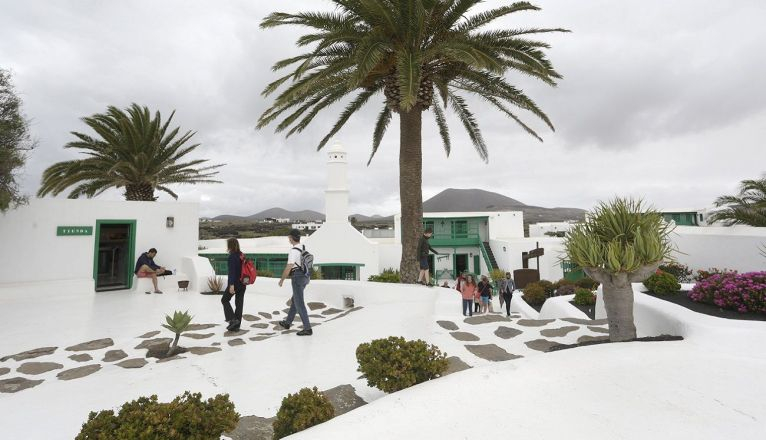
3. Mirador del Río
Another of the artist's works is the viewpoint par excellence in Lanzarote, Mirador del Río, which owes its name to the space of water that separates the island of La Graciosa from Lanzarote.
This is one of the most touristic spots on the island, where Manrique, together with the architect Eduardo Cáceres and the artist Jesús Soto, managed to integrate architecture and nature in such a way that it is practically imperceptible from the outside.
From the balcony itself and from the panoramic glass windows of the viewpoint, visitors can contemplate the Chinijo Archipelago, a group of islets formed by La Graciosa, Roque del Este, Roque del Oeste, Alegranza and Montaña Clara. In addition, the space has a cafeteria to have a snack enjoy heart-stopping views.
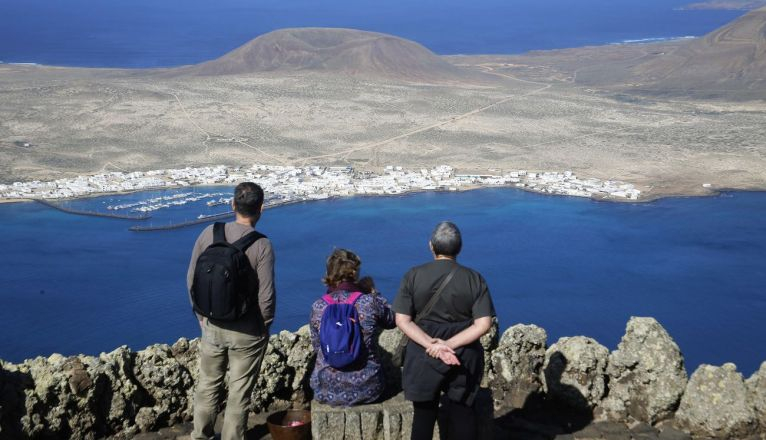
4. El Diablo restaurant, in Timanfaya
In Timanfaya National Park, César Manrique decided to create a very peculiar restaurant called Restaurante El Diablo.
This restaurant takes advantage of the heat of the volcanoes, with temperatures of more than 600 degrees, to cook dishes, such as chicken or beef fillets and chorizo.
Thanks to its panoramic glass, you can enjoy geysers and the Mountains of Fire without leaving the table, an authentic gastronomic experience.
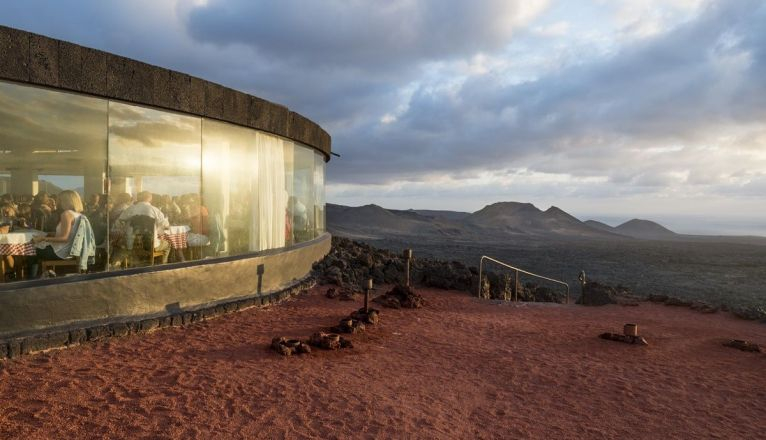
5. Cactus garden
This is the last major intervention by César Manrique in Lanzarote, managing to transform a simple rofera -place to extract thick volcanic sand- into one of the most special places on the island.
The Cactus Garden, located in Guatiza, is a botanical garden with more than 5,000 square meters and more than 7,000 cactus specimens from all corners of the world.
In addition, it also has a mill from the 19th-century, one of the last mills still standing in Lanzarote and where gofio was grounded in the past, and a restaurant with a terrace. Within you can enjoy a panoramic view of the garden, as well as some typical dishes of the island such as wrinkled potatoes with mojo.
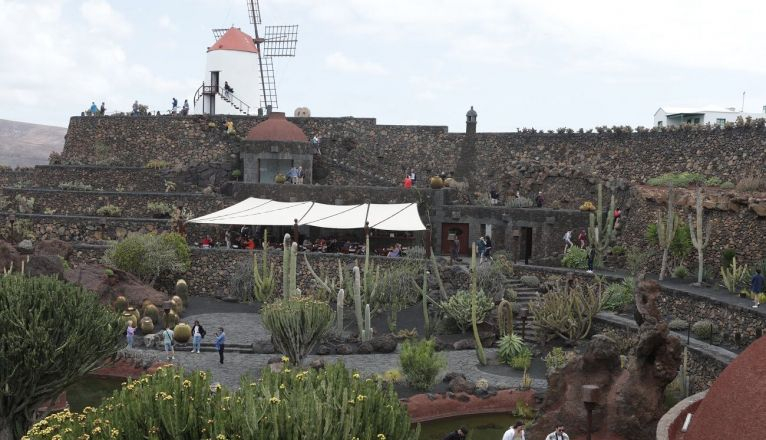
6. Wind toys
Another of Manrique's well-known works are the so-called "Wind Toys", iron sculptures in the shape of spheres or pyramids that rotate and move with the wind, as if it were a toy at the mercy of the Trade Winds.
It is a more avant-garde representation of the old windmills of Lanzarote located in different parts of the island, specifically on the busiest roads.
After the death of César Manrique, the government wanted to make them a reality, so through his workshops they built them little by little, disseminating the artist's legacy. In addition, it should be noted that many of these sculptures are illuminated at night.
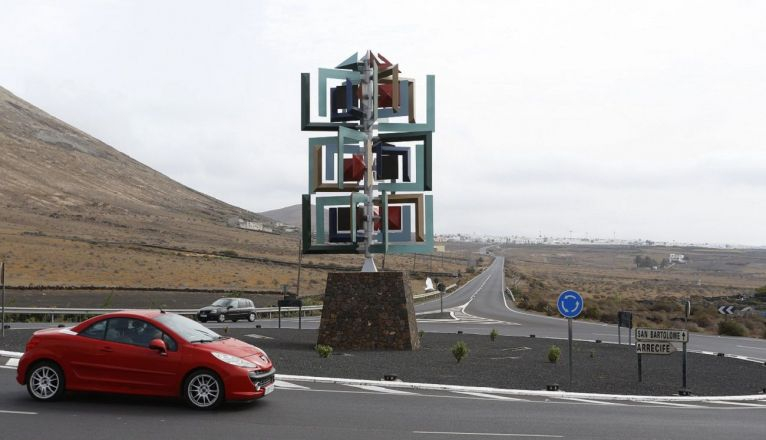
7. César Manrique Foundation in Tahíche
The César Manrique Foundation could be considered the maximum representation of the artist, since it is his former home, where he combined all his cultural reflections, sustainability and plastic arts in the same place.
With more than 300 thousand visitors a year, the FCM located in Tahíche, was built on five large natural volcanic bubbles, but always in harmony with the landscape.
Currently, the museum has two art collections, one contemporary with works by Picasso, Miró, Chillida, Klee and another with the work of Manrique, which includes sketches and notes by the artist, such as Toys of the Wind or the logo of Timanfaya.
